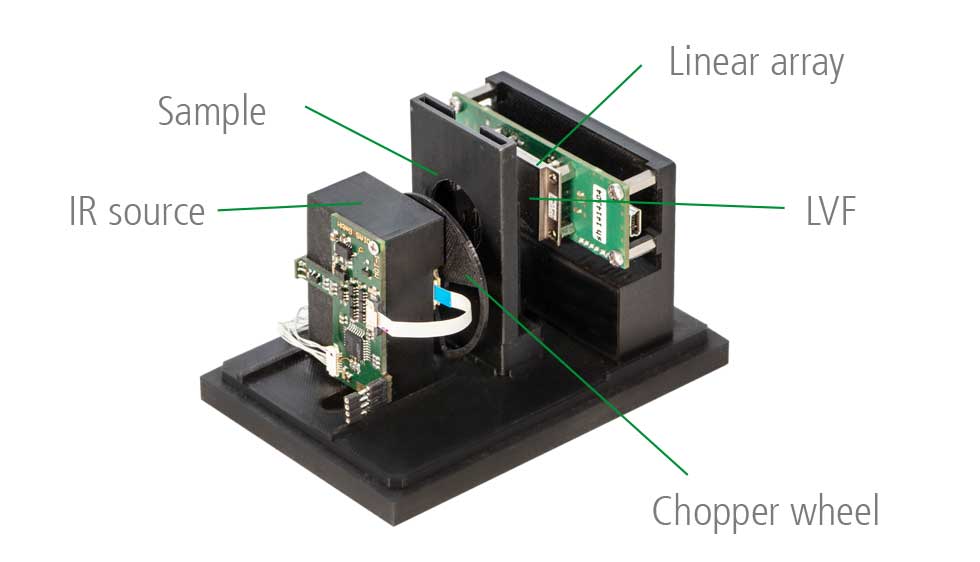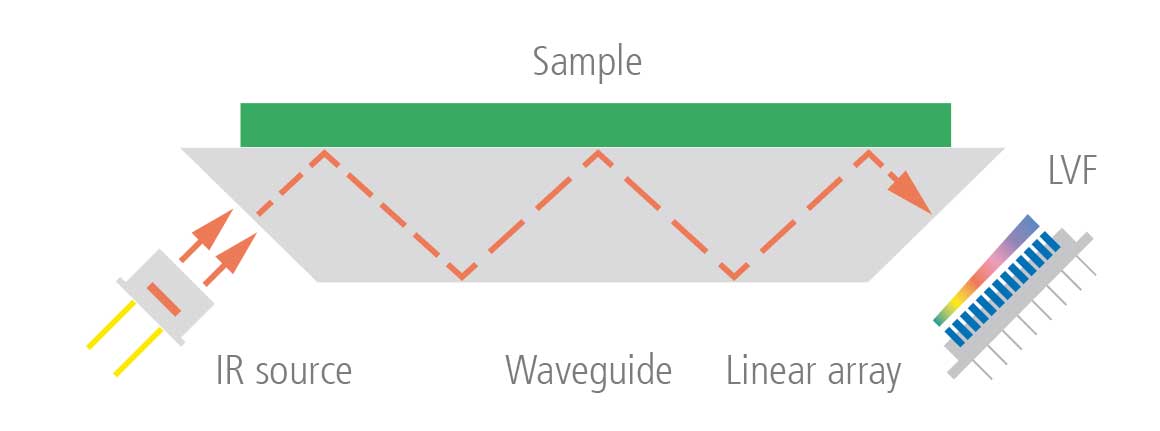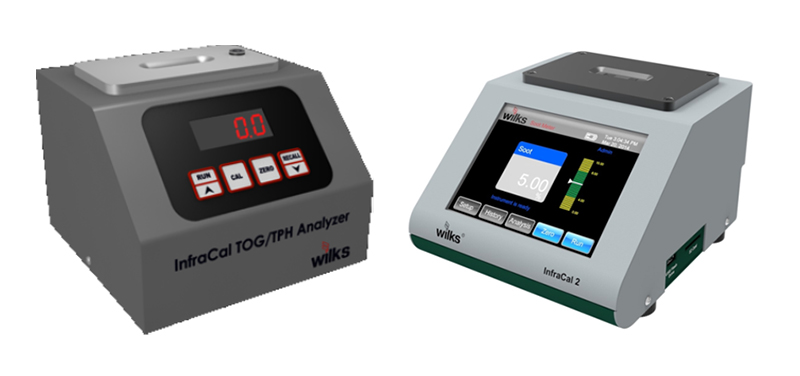Infrared spectroscopy
A wide range of gases, liquids, powders and solids can be analyzed very precisely in the mid-infrared range, as they exhibit substance-typical absorption behavior at these wavelengths due to characteristic molecular vibrations. The energy of the IR radiation stimulates the molecular bonds to substance-typical vibrational modes, resulting in a unique „fingerprint“. Using IR sensors, spectroscopic techniques can give a wide range of information from corresponding measurement samples. Thus, composition, impurities and concentration of various constituents can be determined and detected.
Various physical principles are available for the detection of radiation in the mid-IR range. Pyroelectric detectors PYROSENS of DIAS Infrared GmbH based on lithium tantalate rank themselves in terms of their signal-to-noise ratio between the cooled MCT sensors and the less sensitive and slower thermopiles and bolometers. They also exhibit significantly higher specific detectivity compared to pyroelectric sensors with ceramic thin films, e.g. based on PZT.
PYROSENS line sensors are available with 128, 256 and 510 pixels, among others. This makes them suitable for high-resolution detection over a wider wavelength range together with dispersive optical assemblies and/or linear variable filters (LVF). Linear variable filters are currently available up to a wavelength of about 11 µm, for IR spectroscopy divided into the ranges 1.3-2.6 µm, 2.5-5 µm and 5.5-11 µm.
The spectrometers in which our linear arrays are used are essentially based on three operating principles.
NDIR transmission spectrometer
The setup of a linear array NDIR transmission spectrometer is similar to the setup with single element sensors known from gas analysis. However, by using linearly variable filters, not only individual substances but also mixtures of substances can be analyzed (basic principle in Fig. 1).
Fig. 2 shows a simple demonstrator for this type of spectrometer, which allows very cost-effective and compact spectrometers for general applications. Its core component is our Evaluation Kit which can be used for all PYROSENS arrays.
ATR spectrometer
Attenuated total reflection (ATR) spectroscopy uses the IR array with LVF in conjunction with an ATR crystal (waveguide) and an IR radiation source. The IR radiation is guided through the waveguide in total reflection, whereby the liquid or solid sample to be measured at the surface of the waveguide spectrally influences its reflection behavior. This measurement method enables compact, precise, fast and versatile systems that can also be used in mobile devices. The operating principle of ATR spectroscopy using line sensors with linear graduated filters is shown in Fig. 3.
Grating spectrometer
In the grating spectrometer (principle in Fig. 4), the IR radiation enters through a slit or fiber and first hits a spherical mirror. This parallelizes this radiation, which is then diffracted and reflected at an optical grating. This causes different wavelengths to be directed in different directions. A second mirror now focuses the radiation onto the line sensor, whose pixels now detect radiation of different wavelengths. The wavelength range that can be measured over the entire sensor length is defined by the specific optical arrangement.
Our pyroelectric linear arrays PYROSENS with 128, 256 or 510 pixels are currently preferably used in comparatively small, mobile and inexpensive ATR spectrometers and in grating spectroscopy. The first ATR spectrometers to use PYROSENS arrays were two generations of instruments from the US company Wilks Enterprise (Fig. 5).
Recent device developments use improved PYROSENSE arrays with optimized thermal pixel isolation and significantly improved absorption characteristics.
Typical application areas are:
- Food safety and quality, where the main focus is on detecting traces of chemical contaminants or unacceptable additives. Examples are food controls in the dairy industry, edible oils or alcoholic beverages.
- Monitoring the quality of oils and lubricants, starting with characterization during production and analysis of fuel oil samples through to condition monitoring when used in engines.
- Safety technology for explosives detection (trace analysis of liquid or powdered explosives).
- Environmental technology for air quality monitoring and water analysis
Pioneers in the use of linear pyroelectric arrays in grating spectrometers for laser characterization are the companies Angstrom/Highfinesse with their portable Mid-IR Laser Spectrum Analysers and Wavelength Meters for the range 2-11 µm with PYROSENS arrays with 510 pixels (Fig. 6).
More information and details
- Please read our application note “IR spectroscopy with linear arrays PYROSENS” including all important information regarding infrared spectroscopy.
- Further technical information about our linear arrays PYROSENS





